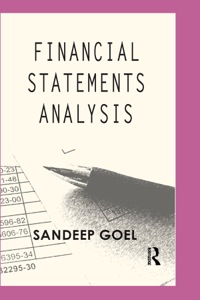Answered step by step
Verified Expert Solution
Question
1 Approved Answer
Hi, please i just need answers for question 2 1. Draw the payoff diagrams below labeling the axis with the correct profit or loss amounts.

Hi, please i just need answers for question 2
1. Draw the payoff diagrams below labeling the axis with the correct profit or loss amounts. a. Purchase of Microsoft common stock or take long stock position at $79 b. Long put position on Microsoft stock valued at $2 with a strike price of $75 c. Draw the synthetic option using information from parts a and b. d. Take a short stock position using Microsoft at $79 e. Long call position on Microsoft stock valued at $3 with a strike price of $90 f. Draw the synthetic option using information from parts d and e. 2. Suppose someone longs a $75 stock when the risk-free rate is 10 percent. The stock is held for 2 years and can go up by 33.33% of its value every year. a. If the investor purchased a call option with a $60 strike price, solve for the call option price using the binomial pricing model. Be sure to sketch the binomial lattice. SHOW YOUR WORK. b. If the investor purchased a put option also with a $60 strike price, solve for the put option price using the binomial pricing model. Be sure to sketch the binomial lattice. c. Compute the call gamma and the put gamma, using the numbers you have obtained from period two options. SHOW YOUR WORK. d. If the stock price changes, what is the probability that the moneyness of the option will change? Explain your answer. e. Use the put-call parity relationship to test the binomial pricing model. SHOW YOUR WORK. 3. Investors generally finance their investment opportunities (assets) with a combination of loans (debt) and equity shareholders. Suppose owner Alex, as a CEO, purchases an asset (e.g., property real estate) expected to go up in value. Instead of paying full price, Alex finances the asset with a loan from Carter Bank and with cash from two college friends, Sam and Chris. Sam wants to invest without having to worry about daily operations and is happy to be a preferred shareholder (PS) with no voting rights. Chris has some experience managing property investments and wants to invest as a common shareholder (CS), thus having a voting right or influence over Alex's decisions. Should the investment underperform and the business goes bankrupt, any leftover proceeds would first go to repay creditors (lenders), followed by preferred shareholders, and then common shareholders. a. Sketch Alex's financial balance sheet (T-account), consisting of a $1,000 asset, a $500 loan from Carter Bank, $100 equity from Sam, and $200 in equity from Chris. Assume Alex also invests $200. b. Draw a profit & loss diagram representing the long asset risk position of the CSs (i.e., Alex and business partner Chris), labeling the vertical axis. Do the CSs have limited or unlimited profit potential? c. PSs are paid a fixed return ahead no matter how well the asset performs. (Any excess returns go to CSs because they take greater risk.) Assume a bullish outlook of the asset's performance, and draw Sam's profit & loss diagram. (Hint: Sam pays $100 for the right to earn a dividend over a set range; the right is subsequently sold once the underlying value reaches the upper limit.) d. Suppose Carter Bank lends to Alex by purchasing a bond issued by the firm (in exchange for cash). Carter SIMULTANEOUSLY sells an option giving Alex the right to call the bond and refinance it into a new one with a cheaper interest rate. Draw Carter Bank's profit & loss diagram with bond prices on the horizontal axis. Next, explain how Carter Bank's yield on the bond changes as interest rates increase. (Hint: The value of a bond/oan is inversely related to interest rates.) e. True/False/Explain: All financiers (i.e., lenders and equity holders) of a firm's assets expect yields or a return that is equal to the risk-free rate of return of a comparable U.S. Treasury." Relate your answer to the binomial pricing theorem. f. If the firm's asset falls below expectations to a value of $550, it would file for bankruptcy and be liquidated. Explain how much the financiers (i.e., Carter Bank, Sam, and the CSs) would receive. g. What concept explains why it is difficult to predict how successful Alex's firm will be? ExplainStep by Step Solution
There are 3 Steps involved in it
Step: 1

Get Instant Access to Expert-Tailored Solutions
See step-by-step solutions with expert insights and AI powered tools for academic success
Step: 2

Step: 3

Ace Your Homework with AI
Get the answers you need in no time with our AI-driven, step-by-step assistance
Get Started


